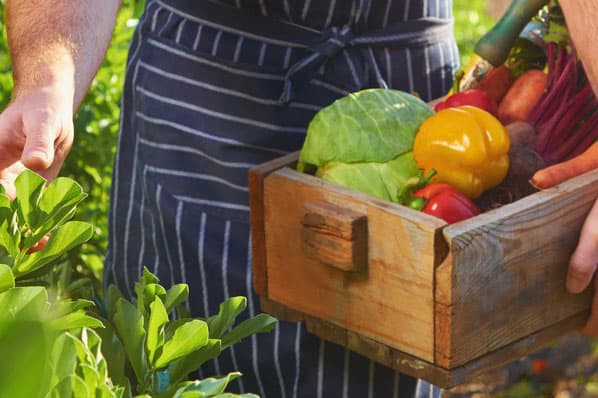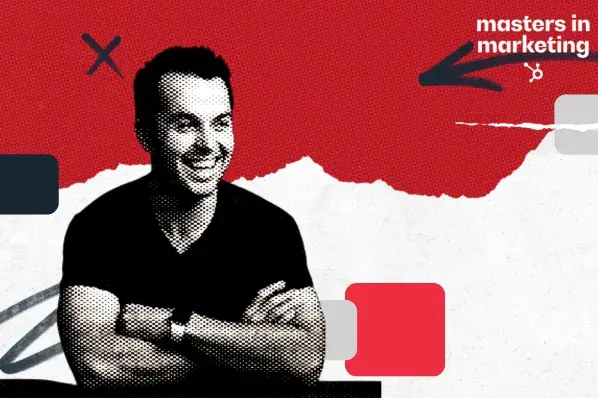In just 5 years, Daily Harvest, which provides healthy, easy-to-prep meals to customers based on algorithmic flavor preferences, disrupted the food industry and earned more than $250 million in revenue.
And, even before the acceleration in home food deliveries in 2020, the health and sustainability-conscious brand had already raked in $43 million in funding from investors who aligned with the company's vision.
In a recent episode of HubSpot's podcast, The Shake Up, our hosts Alexis Gay and Brianne Kimmel spoke with Daily Harvest founder and CEO Rachel Drori to learn what inspired her to build the brand, how she navigated investor pitching, how algorithms fuel the business, and how she thinks about the brand's marketing mix.
Listen to the Shows in HubSpot's Podcast Network Now
Daily Harvest on Growing Its Brand and Customer Base
Daily Harvest's Mission to Serve Healthy Food
[00:21:26] Rachel Drori: We’re not a meal kit. We're more like a [00:21:30] modern CPG than a meal kit. Our food doesn't rotate. You don't have to really cook it. It's already prepped.
[00:21:42] Alexis Gay: Would you say you're defining a new category?
[00:21:45] Drori: Absolutely. I got into it because I'm absolutely a foodie. …. I wanted food that was convenient because that's what makes fruits and vegetables hard. … But I also wanted food that was jam-packed with all the stuff that I know is good for me. … Hippocrates said, “Let food be thy medicine,” right? We've ended up with a Hippocratic oath for medicine being a medicine. Whereas food is kind of lost its way. So we're really here to change that.
… The way that Big Food is set up is very systemically broken. … Investors in big food companies, the big CPGs of the world, are really focused on things like margin, accretion, and slow, steady returns dividends. … When you think about how that translates to food … it's pretty ugly. And the way that they're structurally set up is not to innovate. A case in point is Kraft in recent years, right? Their big innovation last year was launching pink macaroni and cheese. … They’ve just completely lost touch with the customer and they don't have the structural agility to be able to move with modern times.
What drives demand for Daily Harvest?
[00:23:57] Gay: What drives the demand for your product? … Is it that younger generations are focusing on healthier food options? Is that the traditional family dinner is not as much part of our culture, is it because of the struggles of the restaurant industry? What do you think?
[00:24:15] Drori: I think there's a few things. We're kind of at the crossroads of a bunch of — I hate using this term — megatrends, right? … I think people are just smarter and there's enough education out there where people are realizing that if I stick to the basics — like things my grandparents ate, things my great grandparents ate — then I'm going to be okay. So our whole food ethos is really based on this idea where we're not going to tell you what not to eat.
… We are including everybody's eating habits and everybody's eating values, but we're going to provide a base of fruits and vegetables. So our goal is to get everybody to eat more fruits and vegetables. And then, if you want to add a piece of chicken to your harvest bowl … we think that's great.
Navigating Tricky Investment Pitches
[00:25:42] Gay: In 2017, you had $43 million in investments, which is incredible. But in order to get that type of cash infusion, it starts with a pitch. And I want to hear a little bit about one of those pitch meetings back then in 2017, how were you approaching, crafting the pitch around Daily Harvest?
[00:26:02] Drori: 2017 was the point when we felt like we had reached true product-market fit. So pre-fundraising — previous to that point — I would say it was incredibly difficult. People didn't understand how the collections that we had laddered up to this bigger picture to this platform. There was a lot of friction in the fundraising process, especially because the people from who I was trying to raise money just didn't see that there was a problem. They were like, “Well, why, why wouldn't I just buy a Jamba Juice?” I'm like, “I don't even know where to begin.”
[00:26:40] Gay: Did you ever feel discouraged
[00:26:41] Drori: After meetings like that? Oh, discouraged wouldn't even cover it. I think that fundraising is the most demoralizing process.
[00:26:58] Gay: What was the key message you were really trying to land with the people you were seeking investment from.
[00:27:05] Drori: There were two things. The message I was trying to land was just this big picture. That big food is completely broken and that there's this opportunity and that big food is not meeting customers. … Where I would say it got really tricky wasn't necessarily with the problem statement. It really was that a lot of people got tripped up on the frozen.
[00:27:32] Gay: Why do you think that is?
[00:27:34] Drori: They still do, but everyone's like, “Oh, so you're disrupting frozen food?” and I'm like, “Soup is not a frozen category. Lattes are not a frozen category. Breakfast cereal is not a frozen category. How is that your logic?” Frozen is how we make food incredibly clean, unprocessed, convenient, and sustainable. … You know, we're really trying to focus on that, that big picture to paint this story that we're not going after frozen food.
… Eventually, we did it. The other thing that I was really looking for in that round was values alignment from our investors. … I wanted to make sure that we were never going to end up in a position where some of the investment community in big food causes a lot of health challenges. … There was a lot of insuring that our investors were going to have values that aligned as well.
Finding Like-Minded Investors
[00:29:10] Kimmel: How did you actually reverse the pitch and ask those investors questions to give you a real feel if they were going to add value and be a valuable person to help you scale Daily Harvest?
[00:29:25] Drori: One of the tricks, when you're pitching, is that you're also always selling. So one of the things that I did was I showed that there was great customer demand for these things — like sustainability is now table stakes. It wasn't five years ago. Just showing where the customer demand was going and showing that there was also a business revenue opportunity tied to everything that we were hoping to do on the sustainability side … was a really important part of the story. Some of the questions that we asked just to make sure that people were aligned actually weren’t to the investors directly. it was always to other companies that they invested in and not the ones that they introduced us to.
… Those back-channel calls where you ask about a time where there was a really difficult decision that you had to weigh: Margins versus doing what was right for the customer, right? For me, that's one of the hardest tensions and I was always going to focus on what was best for the customer — and what's best for the Earth is also best for the customer.
Building Out the Business
[00:32:08] Kimmel: What were the next steps that had to happen to make Daily Harvest truly scalable?
[00:32:19] Drori: A lot of it sat in our supply chain. … We had a lot of amazing farmers that we engaged directly with. We still, to this day, do all of our own sourcing and work directly with everyone. But a lot of that story was very idealistic. … It was a hard thing to do at that scale.
… Even like our packaging, right? We have these like grand plans to have completely home-compostable packaging. There's a lot of storytelling there because there's a scale problem. So you always have this chicken or egg problem when you're talking about physical goods, where in order to make something cost-effective so that you can think about things like profitability, you have to have the scale to be able to justify those big swings.
Personalizing the Customer Experience
[00:34:15] Gay: A lot of companies that are offering food delivery in some capacity are keeping their offering really simple, focusing on just dinner or just one type of food. But you have over 60 items for breakfast, lunch, and dinner. Was that a conscious decision you made to offer so many more?
[00:34:32] Drori: Because we have this direct link with our customers. What we're able to do is we actually phenotype taste beds and we understand what every single customer wants and needs down to an incredible level of detail that allows us to create food for each individual. We don't look at customers as averages. We really look at each individual and we create food to meet the needs of those customers.
… We have smoothies for different tastes, preferences, and different tea, eating values, and different profiles. As we expand into this collection depth, we see different groups consuming over different days. So it's really systematic the way that we think about it. And it's really served as well to increase share of stomach over time,as we've been able to take this data and turn it into meeting the needs of our customers.
[00:35:41] Gay: How did you build that?
[00:35:45] Drori: We have an incredible algorithms team who has really been a key part to our food delivery and then the personalization tied to that development to make sure that we're matching the right people with the right food. That was creative.
[00:38:00] Kimmel: How do you balance qualitative insights as well? Like, do you have a great team that's reading customer support tickets? Do you have focus groups? How do you collect a lot of Individual insights from each Daily Harvest user?
[00:38:14] Drori: There are two ways in which we do that. One is we have an incredibly passionate care team. … We’ve really emboldened our care team to be a part of this co-creation journey and adding the context behind what we're seeing in the data. That's a huge piece of what we do. Then we have a in-house research team that takes the data that we see and ties it together with the emotional, the psychological, the why behind what we're seeing. … And it's an incredibly powerful combination.
Daily Harvest's Changing Marketing Mix
[00:41:20] Gay: I want to talk a little bit about your marketing mix. … In a world where startups rely so heavily on Facebook, Google, and Amazon for sales, you have invested in TV ads in influencer partnerships. … I would love to know what was your decision-making process in making some of those bets?
[00:42:11] Drori: It was easy to scale on Facebook. Now it's a whole different ball of wax. The landscape has changed significantly … the landscape is always changing, it's a complete moving target and something that works today will not work tomorrow. It’s just how you have to live in this world. We went out really aggressively into every channel you can imagine to give us that optionality and that agility where we can change our spend in different channels based on what happens to be working at the time.
... Influencer marketing is part of our mix, TV is a part of our mix, but I think the most important thing is — even if one thing is working really well — that you keep your spend and you keep the other channels engaged enough where if something changes you can always pivot and change that mix.
[00:43:57] Kimmel: How do you think about some of the branded Daily Harvest stuff versus like engaging with influencers and people that are likely to use Daily Harvest anyway, because it falls into like this new category of just easier, healthier.
[00:44:27] Drori: People always say like, “What's the secret to your really fast growth?” And I actually talk about our supply chain, which is not the answer that people want to hear, but the reason why is … if you've ever seen a Rogers bell curve, it’s a normal bell curve, but if you think about the way normal product development works, you have an insight and then can take up to a year to ring something to market.
… Climbing up that curve, by the time you get to the top. That's usually when big companies are going to market. Right? Our supply chain agility and our data allows us to go to market when an early adopter is interested in something and our early adopters because we listened to them, became these evangelists
… And what's really powerful is that it spurs this virtuous marketing cycle that rides itself up that curve, as opposed to facing headwinds on the way down, where you have to like hire Justin Timberlake to shake his tushy on television. … Of course, we pay for some influencers, but really, what you're seeing is us co-creating with our customers and our customers being so glad that we listened to them and gave them what they wanted.
To hear the full conversation or check out other episodes of The Shake Up, click here.
Marketing Case Studies








![How to Turn a Case Study into a Customer Success Story [+ Tips from HubSpot Marketers]](https://53.fs1.hubspotusercontent-na1.net/hubfs/53/customer-success-story.jpg)



